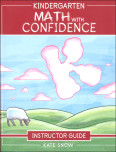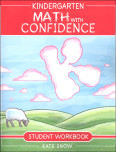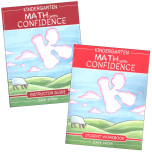We use cookies to make your experience better. To comply with the new e-Privacy directive, we need to ask for your consent to set the cookies. Learn more.
Recommended for ages 5-6 years, children should be able to count to 10 and hold a pencil. Topically, children learn to count to 100, write numbers, perform simple addition (0-10), skip count by 2, 5 and 10, recognize shapes and patterns, handle measurements, time, and calendar skills. Recommended manipulatives include 100 small counters, pattern blocks, coins, index cards, blank paper, and pencils. Numerous household items are required for example: construction paper, shoes, and a small toy.
The Instructor Guide (460 pgs) offers scripted lessons to guide you through every step. Goals are given for each lesson as well as notes to help parents understand math learning at this age. There are weekly suggestions for math picture books to enhance the learning, checkpoints to ensure that your child is ready to move on, and suggestions for incorporation into daily activities. Guide also includes answers to the student workbook.
The Student Workbook (128 pgs) is colorful and provides review and practice for the concepts presented in the lessons as well as developing fine motor skills in preparation for first grade. Children and parents will both love this engaging approach to math.









